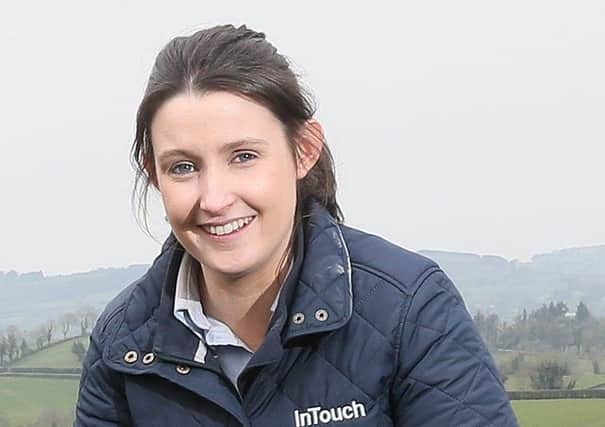Measuring, monitoring and managing grass


We are currently in a grass deficit situation, something we would never have imagined a few months ago. The GrassCheck report for this week indicated that grass growth is currently sitting at about 53kg DM/ha/day. The average rate for this time of year is 80kg. Like most things, not every farm will be in this situation, and farmers need to act to suit their own needs. All of this ties in with our InTouch ethos of “Measure, Monitor and Manage.”
Grass allocation, now more than ever, needs to be as accurate as possible to allow ultimate utilisation. The best way to do this is to regularly walk your farm and find out how much grass is available. This can be done by using a plate meter or simply just visually assessing paddocks. Rotation length should be based on your farm cover but if you are eating more than you are growing then this needs to be extended beyond the traditional 21 days. The first rule is that you need 10 days grass ahead at any one time.
Advertisement
Advertisement
This may mean that the ground usually taken for silage needs to be used as part of the grazing platform, which needs to be noted for forage stocks later. A soil moisture deficit has caused grass growth to slow down, but it also means that this lack of water and excessive heat causes the plant stress and means it will reproduce at lower covers.
Upholding production levels is vital during this time, not only from a financial view but also from a cow health perspective. Poor grass growth can lead to an over estimation of intakes from grass, which will result in a lack of energy in the animal’s diet and decreased milk yields, also impacting on milk solids. Careful attention needs to be paid to body condition loss in fresh cows, as they are already under pressure. Higher-yielding cows could be kept housed to relieve pressure on the grazing platform.
Buffer feeding is inevitable at this stage to maintain performance. We need to know exactly what cows are eating in order to properly supplement them at grass. For example, a 600kg Holstein Friesian cow will eat between 3–3.5% of body weight, so that is 21kg dry matter.
Getting the DMI correct will get you 90% of the way there; the extra 10% will be the quality of the feed. 100 cows consuming 16kg dry matter of grass per day going into a 2,800 kg cover would need 1.25 ha for 24 hours. It is possible that cows will eat a further 4–8kg/DM, depending on the buffer size.
Advertisement
Advertisement
What to include in the buffer will vary from farm to farm and needs to be adjusted to what feedstuff is available and complementary to grass. Cereals and concentrates are ideal for increasing the energy density of the buffer, but we need to ensure that there is enough fibre to balance the diet. Good-quality grass silage, maize silage or whole crop are all good forages to include. the use of digestible fibre sources such as pulp will bridge the gap between forages and cereals.
Grass protein levels will be variable on many farms due to weather, growth rates, grass variety, fertiliser application and response and whether you are dealing with old or new pastures.
We need to keep an eye on the overall diet protein and milk urea levels and make any necessary changes. We need to be careful when adjusting the level of forage that is used in the diet, that our forages do not become mouldy or heat. Higher dry matter forages and moist feeds can also be a threat if not managed correctly.
For many farms, the use of conserved forage is not the normal and due care, and attention needs to be taken to make sure that you do not run out of feed over the winter. We should try and avoid using first-cut silage on farms just yet. High-quality surplus bales that have been taken from the grazing platform a few weeks ago are ideal to use here.
Advertisement
Advertisement
You need to complete a feed budget for your farm if you find you are eating into winter reserves and further cuts are proving light. A rough guide on this would be 1.6 tonnes of forage per cow per month and 1 tonne of forage for youngstock.
For information on buffer feeding ideas, ways of stretching grass and feed budgeting advice, please contact InTouch on 0121 374 2969 or [email protected]